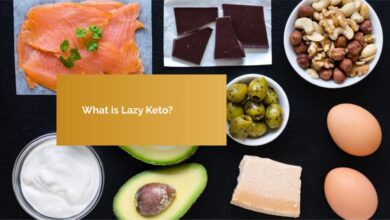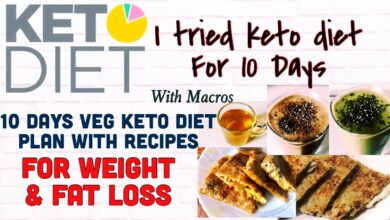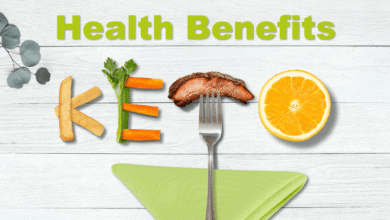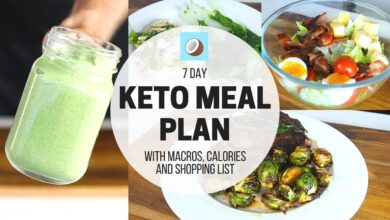
Title
Keto Diet for Heart Disease Prevention
Introduction
- Why cardiovascular health matters now more than ever
- The growing popularity of the ketogenic lifestyle
- Can a very‑low‑carb, high‑fat diet really protect your heart?
Keto Basics
- Defining nutritional ketosis
- How keto changes fuel metabolism
- Macronutrient ratios that matter for heart health
Understanding Heart Disease
- Major risk factors (inflammation, high blood pressure, insulin resistance)
- Atherosclerosis and the role of triglycerides
- Why traditional low‑fat advice has been challenged
Metabolic Advantages of Keto
- Lowering fasting insulin and blood glucose
- Impact on visceral fat and waist‑to‑hip ratio
- Raising HDL (“good” cholesterol) and lowering triglycerides
The Science Behind Keto and Cardiovascular Markers
- Clinical trials comparing keto to low‑fat diets
- Effects on ApoB, small dense LDL, and particle size
- Inflammation markers (CRP, IL‑6) under ketogenic conditions
Key Nutrients in a Heart‑Smart Keto Plan
- Omega‑3 fatty acids from fatty fish
- Magnesium and potassium for blood‑pressure control
- Antioxidants from low‑carb vegetables and berries
Designing a Cardioprotective Keto Plate
- Healthy fat sources: extra‑virgin olive oil, avocado, nuts
- Choosing high‑quality proteins: wild‑caught seafood, pasture‑raised poultry
- Net‑carb vegetables that provide fiber without glycemic spikes
Common Pitfalls and How to Avoid Them
- Dirty keto vs. clean keto
- Excessive saturated fat without balance
- Neglecting electrolytes and hydration
Intermittent Fasting + Keto for Heart Benefits
- Synergistic effects on insulin sensitivity
- Autophagy and arterial plaque stabilization
- Best fasting windows for beginners
Exercise and Keto for a Stronger Heart
- Why resistance training preserves lean mass
- Zone‑2 cardio for fat oxidation and mitochondrial health
- Electrolyte strategies for keto athletes
Supplements to Consider
- Fish‑oil concentrates and triglyceride reduction
- CoQ10 for myocardial energy
- Vitamin D3 + K2 for calcium metabolism
Monitoring Progress Safely
- Lab tests: lipid panel, HbA1c, NMR lipoprotein profile
- Home metrics: ketone readings, blood pressure, HRV
- When to consult a cardiologist familiar with keto
Real‑World Meal Plans and Recipes
- One‑day sample menu (20 g net carbs)
- Five grab‑and‑go snack ideas that keep you in ketosis
- Meal‑prep tips for busy professionals
Success Stories and Case Studies
- Reversal of metabolic syndrome in mid‑life adults
- Athletes using keto for endurance and cardiac output
- Older adults improving ejection fraction and stamina
Conclusion
- Summarizing keto’s cardioprotective mechanisms
- Practical takeaways for adopting a heart‑smart keto lifestyle
- Encouragement to personalize with medical guidance
FAQs
- Is keto safe if I already take statins?
- Will eating more fat clog my arteries?
- How long before cholesterol numbers improve?
- Can vegetarians do a heart‑healthy keto diet?
- What if my LDL‑C rises on keto?
Keto Diet for Heart Disease Prevention
Modern cardiology faces a paradox: while low‑fat guidelines have ruled for decades, heart disease remains the world’s leading killer. Meanwhile, low‑carbohydrate, high‑fat eating—better known as the ketogenic diet—has rocketed from fringe to mainstream. Could flipping the script on fat actually protect your heart? Let’s unpack the science, the myths, and the practical steps that can make keto a powerful ally in cardiovascular wellness.
Introduction
Heart disease doesn’t appear overnight. It sneaks up through years of creeping waistlines, rising blood pressure, after‑dinner sugar spikes, and silent inflammation. If you’ve ever left a doctor’s visit clutching a statin prescription—or if heart trouble runs in your family—you know the anxiety all too well. Enter the keto diet: a very‑low‑carb approach that trains your body to burn fat for fuel instead of glucose. Done right, keto can lower insulin, tame triglycerides, raise protective HDL, and shrink visceral fat—the very factors that drive heart disease risk.
But keto also comes with questions: Isn’t eating more fat dangerous? What about LDL cholesterol? And how do you build a plate that’s both keto‑compliant and heart‑smart? This in‑depth guide delivers evidence‑based answers plus actionable tips, meal ideas, and troubleshooting strategies to keep your ticker in top shape while you enjoy the metabolic perks of ketosis.
Keto Basics
Nutritional ketosis occurs when you restrict carbohydrates (usually under 20–50 grams of net carbs per day) and moderate protein while increasing healthy fats. Your liver responds by producing ketone bodies—beta‑hydroxybutyrate (BHB) is the star—which replace glucose as your cells’ primary energy source. Unlike the ketones generated during uncontrolled type 1 diabetes, nutritional ketones are tightly regulated and provide a clean‑burning fuel that may enhance mitochondrial efficiency and reduce oxidative stress in cardiac tissue.
Typical macronutrient targets for a therapeutic keto diet:
- Fat: 65–75 % of calories
- Protein: 20–25 %
- Carbs: 5–10 % (net)
When carbs drop, insulin drops. Lower insulin unlocks fat stores, lowers inflammation, and improves blood‑sugar control—three pillars of cardiovascular health.
Understanding Heart Disease
Atherosclerosis—the buildup of plaque inside arteries—starts when LDL particles lodge in the arterial wall and become oxidized. Inflammation and high triglycerides accelerate the process, while HDL helps escort cholesterol out. Contrary to popular belief, dietary cholesterol has minimal impact on blood cholesterol for most people. Instead, insulin resistance, chronically high blood sugar, and triglyceride‑rich lipoproteins are the real culprits. Keto addresses these drivers head‑on.
Metabolic Advantages of Keto
- Lower Insulin & Glucose: Ketogenic eating slashes fasting insulin up to 50 % within weeks, helping arteries relax and blood pressure decline.
- Triglyceride Reduction: Dramatic drops—often 30–40 %—are routine, shrinking the number of atherogenic remnants.
- HDL Rise: Many keto dieters see HDL climb into the cardioprotective 60–80 mg/dL range.
- Visceral‑Fat Loss: Keto preferentially burns deep belly fat—the inflammatory kind linked to heart attack risk.
The Science Behind Keto and Cardiovascular Markers
Randomized trials show keto diets outperform low‑fat diets in improving triglyceride/HDL ratio, a strong predictor of heart events. Particle‑size testing often reveals a shift from small, dense LDL (more dangerous) to large, buoyant LDL. Inflammation markers like C‑reactive protein (CRP) and interleukin‑6 fall as well. Although LDL‑C can rise in a subset of “hyper‑responders,” focusing on ApoB and LDL‑particle number gives a clearer risk picture. For most, overall cardiovascular risk improves.
Key Nutrients in a Heart‑Smart Keto Plan
- Omega‑3s: Wild‑caught salmon, sardines, or fish‑oil supplements balance omega‑6 intake and lower triglycerides.
- Magnesium & Potassium: Leafy greens, avocado, and pumpkin seeds support healthy heart rhythm and blood pressure.
- Polyphenols: Berries, olives, and cacao fight oxidative stress and bolster endothelial function.
Designing a Cardioprotective Keto Plate
Visualize your plate in thirds:
- Non‑starchy veggies (zucchini, spinach, Brussels sprouts) provide fiber and micronutrients.
- Protein (wild fish, pasture‑raised poultry) at palm size.
- Healthy fats (olive oil drizzle, half an avocado, handful of walnuts) finish the meal and keep you full.
Swap butter in heavy amounts for olive oil, macadamia oil, and fatty fish to tilt your fat profile toward mono‑ and poly‑unsaturated fats proven to safeguard the heart.
Common Pitfalls and How to Avoid Them
- Dirty Keto: Bacon‑cheese bunless burgers can fit macros but overload saturated fat and lack micronutrients.
- Electrolyte Neglect: Sodium, magnesium, and potassium depletion can cause palpitations—supplement or salt wisely.
- Overlooking Fiber: Aim for 25 g daily from low‑carb veggies, chia, and flax to feed gut microbes tied to heart health.
Intermittent Fasting + Keto for Heart Benefits
Combining keto with a 16:8 or 18:6 fasting window enhances insulin sensitivity, promotes autophagy (cellular cleanup), and can stabilize or even regress arterial plaque in animal studies. Start gradually—skip breakfast twice a week—and hydrate with mineral water or black coffee.
Exercise and Keto for a Stronger Heart
Zone‑2 aerobic training (brisk walking, cycling at conversational pace) teaches your heart to burn fat efficiently. Resistance training supports lean muscle, boosts resting metabolism, and improves insulin action. On keto, adequate sodium (3–5 g/day) and magnesium prevent cramps and sustain performance.
Supplements to Consider
- Fish Oil (2–4 g EPA/DHA): Lowers triglycerides.
- CoQ10 (100–200 mg): Supports heart‑muscle energy, especially if on statins.
- Vitamin D3 + K2: Improves blood‑pressure regulation and keeps calcium out of arteries.
Consult your healthcare provider before starting any new supplement.
Monitoring Progress Safely
Order baseline labs, then retest at 3‑ and 6‑month marks:
- Standard lipid panel plus ApoB
- HbA1c and fasting insulin
- hs‑CRP for inflammation
Use a home glucometer and ketone meter to fine‑tune carb tolerance. Track blood pressure and resting heart rate weekly.
Real‑World Meal Plans and Recipes
Breakfast: Spinach‑mushroom omelet cooked in olive oil, side of avocado.
Lunch: Sardine salad over arugula with lemon‑olive‑oil vinaigrette.
Snack: Handful of macadamias and a few raspberries.
Dinner: Grilled salmon with roasted asparagus and garlic aioli.
Dessert: 90 % dark chocolate square dipped in almond butter.
Success Stories and Case Studies
- Mark, 52: Dropped 30 lbs, triglycerides from 220 to 90, stopped hypertension meds.
- Lena, 63: Improved ejection fraction by 5 % and walked her first 5K after six months keto + IF.
- Carlos, 45: ApoB fell from 120 to 80 while HDL rose to 72.
Conclusion
The ketogenic diet, when executed with heart‑smart food choices, offers an evidence‑based route to lower insulin, tame inflammation, and optimize lipid markers—all critical levers in preventing heart disease. Swap the processed carbs for vibrant vegetables, quality proteins, and healthy fats; monitor your labs; move your body; and partner with a healthcare professional. Your heart will thank you.
Read Also; Keto Diet Heart Health Benefits
FAQs https://en.wikipedia.org/wiki/FAQ
Is keto safe if I already take statins?
Yes, but monitor liver enzymes and lipid markers with your doctor, who may adjust statin dosage as triglycerides fall and HDL rises.
Will eating more fat clog my arteries?
Healthy fats combined with lower carbs typically improve triglyceride/HDL ratio and reduce small dense LDL, lowering atherosclerotic risk.
How long before cholesterol numbers improve?
Many see triglycerides drop and HDL rise within 6–12 weeks; comprehensive changes in particle size may take 3–6 months.
Can vegetarians do a heart‑healthy keto diet?
Absolutely—emphasize eggs, dairy, nuts, seeds, avocado, low‑carb veggies, and supplement with algae‑based omega‑3s.
What if my LDL‑C rises on keto?
Ask for an ApoB or LDL‑particle test; if particles stay low and HDL/triglycerides improve, overall risk may still be reduced. Otherwise, tweak saturated/unsaturated fat ratio and re‑test.






One Comment